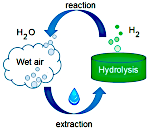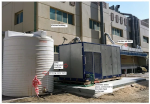Sustainable Development Festival
14 May, 2024 in Computers, Science

Yesterday, I had the honor of being one of the speakers at the seminar on Energy Sustainability and Water Extraction from Air, held in the prestigious Ugo Foscolo Hall of the University of Pavia. As part of the sustainable development festival, we discussed the current state of research and applied research on extracting water from air using integrated devices. From green hydrogen to energy improvement in buildings to process optimization, my presentation focused on the development of physical/mathematical simulation software for Air To Water technologies.







